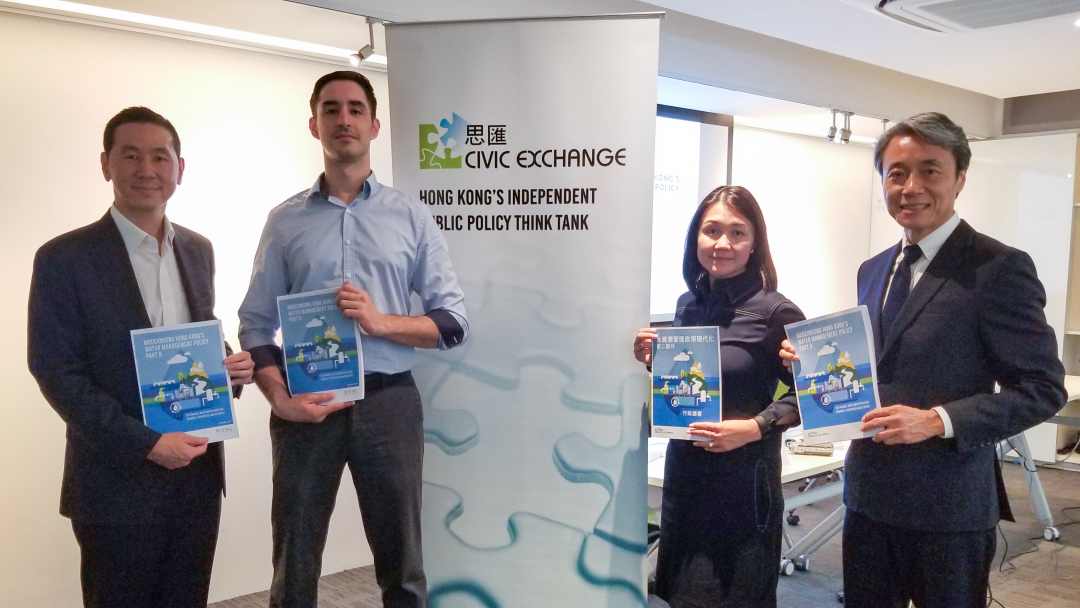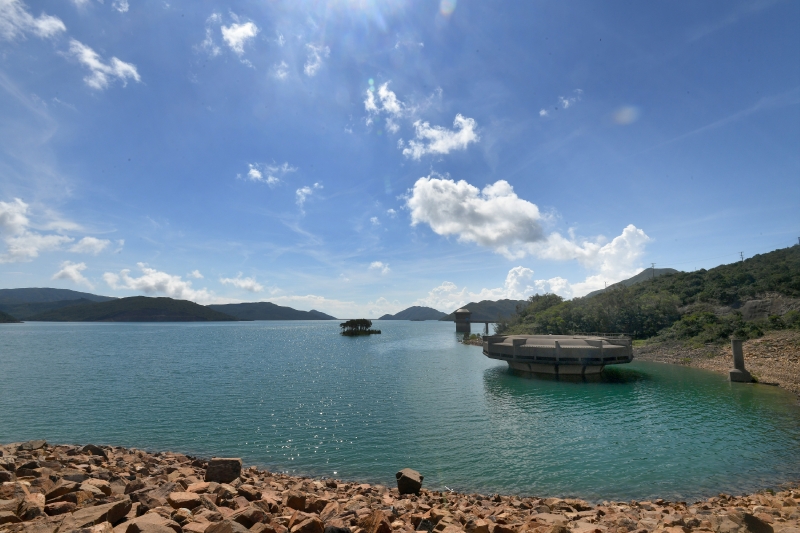Hong Kong was infamously once dismissed as “a barren rock with nary a house upon it”. The snub hasn’t aged well since the 19th century, but our ‘barren rock’ has always lacked major lakes, rivers or aquifers – making it hard to generate a reliable, adequate supply of local fresh water.
As a result, since 1965, Hong Kong has imported increasing amounts of water from the Dongjiang River in Guangdong. Imported Dongjiang water currently meets 70-80% of Hong Kong’s total freshwater needs, with local rainwater making up the remaining 20-30%.

Now, local think-tank Civic Exchange is calling for the government to reduce its reliance on imported water from Dongjiang significantly. Civic Exchange’s latest report highlights how putting efforts into diversifying Hong Kong’s water supplies could improve long-term water security in Hong Kong, particularly in the face of increasing droughts triggered by climate change.
“The whole idea is about reducing reliance on the natural water cycle. It’s about resilience: so that, as a city, we can maintain control,” said Dr Frederick Lee, Civic Exchange fellow and executive director of HKU’s Centre for Water Technology and Policy, at the report’s launch last week.
“There’s no evidence of [water] ever becoming a political tool,” reassures Dr David von Eiff, associate researcher with Civic Exchange and author of the report. “It’s more an economic thing – and we’re currently in a weak economic bargaining position. Our main recommendation is to start weaning off the reliance on Dongjiang water.”
Hong Kong’s current ‘lump sum deal’ with the mainland guarantees delivery of up to 820 million cubic metres per year. This deal cost HK$4.8 billion in 2019, with the price to be renegotiated next year. But, under the lump sum deal, Hong Kong must pay the full annual amount, regardless of how much water is used.

Hong Kong’s average annual consumption in the last decade has been 640 million cubic metres, only rising close to the full 820 million cubic metres once, during a drought in 2011. Critics have argued that Hong Kong should pay only for what it uses and that the deal is too inflexible.
The cost per supplied unit of Dongjiang water has also increased at roughly double the rate of inflation for the last decade. And, with seven cities, including Shenzhen, now competing to use the Dongjiang River as a water source, prices are liable to continue increasing.
Meanwhile, demand for water in Hong Kong continues to grow. The daily per-capita usage (including seawater for flushing) is 220 litres – double the global average.
While acknowledging that Hong Kong is unlikely to be able to stop importing Dongjiang water altogether, Civic Exchange has made several recommendations for the Water Supplies Department (WSD) to maintain a sustainable and diverse water supply in the coming decades.
“Right now, Hong Kong is focusing more on desalination, which is what most countries are currently looking at first,” von Eiff points out.
Among the key recommendations in the report is a call for WSD to consider the benefits and drawbacks of desalination carefully. A new desalination plant in Tseung Kwan O, opening in 2022, will use reverse osmosis to turn seawater into freshwater. This method is projected to start contributing 5% of Hong Kong’s freshwater by 2023, eventually rising to 10%.

While it seems an obvious solution for a city surrounded by sea, Civic Exchange points out that desalination has several downsides. It is a very energy-intensive process, requiring up to eight times more energy than the city’s current water production. As well as a high carbon footprint, this makes it relatively expensive compared to buying the same amount of water from China.
The desalination process also produces a condensed brine, which is released back into the sea, raising salinity. The potential impacts on local marine ecology are still unknown.
In the paper, Civic Exchange argues that improved water stewardship and conservation efforts (such as reducing seepage, theft and pipe leaks, which currently result in a loss of up to a third of the city’s fresh water) could more easily and cheaply account for any potential offsets made by desalination.
The Civic Exchange report also claims that WSD’s plans to deploy recycled water (treated greywater, reclaimed water and harvested rainwater) as 2.5% of the overall supply are not “aggressive or ambitious enough”. The report urges WSD to increase collection of recycled water for non-potable uses such as landscaping, construction, industry and toilet flushing in future new town developments – while setting a more ambitious target to cover 20% of total supply with recycled water.
The report pushes for better data transparency on consumption patterns to promote awareness among users and allow informed debate, and calls for all four relevant government agencies (the WSD, EPD, AFCD and DSD) to collaborate better. “Right now, each agency is working on its own,” says von Eiff. “For Hong Kong’s long-term benefit and water sustainability, there somehow needs to be administrative reform.”

“We will study [Civic Exchange’s] latest report in detail,” a WSD spokesperson told HKFP in a written statement.
“We have been working on the areas where Civic Exchange has [previously] made recommendations. In tandem, we have been expanding the network coverage of using lower-grade water (ie seawater and recycled water) for non-potable uses. Extending the use of reclaimed water to industrial and construction activities … will require upgrading the existing sewage treatment works, construction of water reclamation facilities and construction of an extensive reclaimed water supply network, to distribute reclaimed water to the users all over the territory.
These massive works will not only require substantial resources, but also cause significant impact on the community such as traffic and noise impacts … Such proposals need to be carefully evaluated.”
Von Eiff points out that, as water tariffs have been frozen since 1995, the amount that Hongkongers pay for each unit of water no longer reflects the real cost – WSD is heavily subsidised by LegCo to make up the shortfall.
“It’s very hard to do water reclamation or desalination or conservation if people think water is cheap. If a resource is cheap, that usually means it’s plentiful,” von Eiff says. “It’s important to make sure citizens are fully aware of the true cost of these resources.”
Type of Story: Sponsored By
An organization or individual has paid to be connected to this work but did not approve or review it.
Support HKFP | Policies & Ethics | Error/typo? | Contact Us | Newsletter | Transparency & Annual Report | Apps
Help safeguard press freedom & keep HKFP free for all readers by supporting our team

LATEST FROM HKFP
HKFP has an impartial stance, transparent funding, and balanced coverage guided by an Ethics Code and Corrections Policy.
Support press freedom & help us surpass 1,000 monthly Patrons: 100% independent, governed by an ethics code & not-for-profit.










